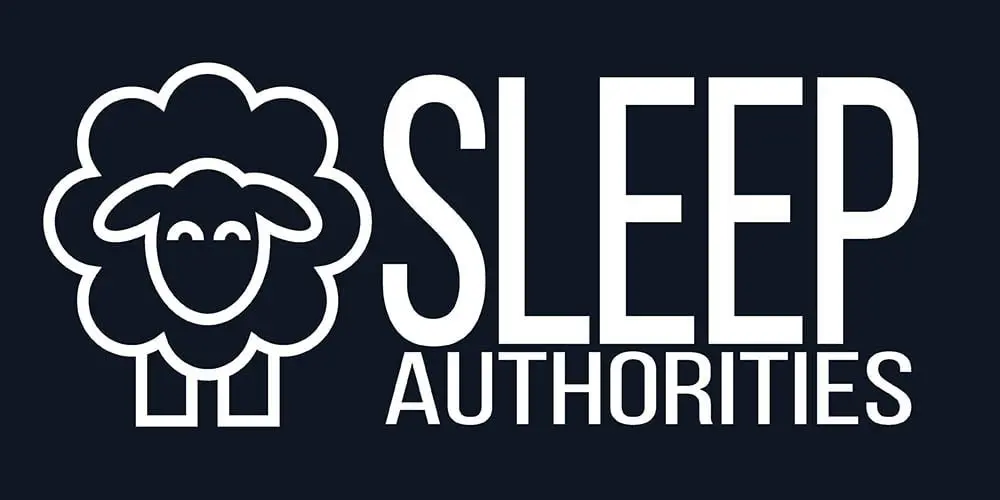Is Trazodone still a safe and effective option for sleep in 2025? Originally prescribed as an antidepressant, Trazodone has become one of the most commonly used off-label medications for insomnia. But with growing concerns about side effects and newer alternatives now available, many people are questioning whether it’s still the right choice for sleep issues.
While Trazodone can help some people fall asleep faster or stay asleep longer, it’s not without risks—especially with long-term use. Understanding the right dosage, possible side effects, and safer alternatives is crucial if you’re considering or currently using this medication for sleep.

In this article, we’ll break down how Trazodone works, what to expect in 2025, and which natural or non-drug options might be better suited for lasting, restful sleep.
What Is Trazodone and Why Is It Used for Sleep?
Getting consistent, restful sleep remains a major challenge for many people. From occasional insomnia to chronic sleeplessness, the search for effective solutions has led some to prescription medications. One name that often comes up is Trazodone, commonly prescribed under the brand name Desyrel.
Though originally developed as an antidepressant, trazodone has gained popularity in recent years as a sleep aid, largely due to one of its most common side effects: drowsiness. But how exactly does it work, and why are so many doctors recommending it for better sleep?
Primary vs Secondary Insomnia
Before diving into the medication, it’s important to understand the difference between primary and secondary insomnia.
- Primary insomnia happens on its own, without an underlying health condition.
- Secondary insomnia is linked to another issue—such as depression, anxiety, chronic pain, or medications.
Trazodone is often used in both cases because of its calming effects and ability to help patients fall and stay asleep.
Trazodone’s Origins and Medical Use
Trazodone was developed in the 1960s and approved by the FDA in 1981 as a treatment for major depressive disorder. Though it’s no longer a first-line antidepressant today, it continues to be prescribed for:
- Unipolar depression
- Anxiety disorders
- Off-label use for insomnia
The drowsy side effect—once seen as a drawback—has made it a go-to option for doctors treating patients who struggle with sleep.
How Trazodone Works in the Brain (SARI Explanation)
Trazodone is a serotonin antagonist and reuptake inhibitor (SARI). This means it blocks some serotonin receptors while also preventing the brain from quickly reabsorbing serotonin.
The result? Higher serotonin levels remain in the brain for longer, which helps regulate mood, reduce anxiety, and encourage relaxation—making it easier to fall asleep.

Why Trazodone Is Gaining Popularity as a Sleep Aid
There are a few key reasons trazodone is now widely used as a sleep medication:
- Lower risk of dependence compared to drugs like Ambien or Lunesta
- Affordable price (often less than $10/month)
- Generally mild side effects
- Non-controlled substance status in the U.S., allowing easier prescribing
With its sedative effects and safer profile, trazodone is seen as a practical alternative for people who want help sleeping but wish to avoid habit-forming medications.
Benefits of Trazodone for Sleep
Trazodone has become a popular off-label treatment for sleep disorders, particularly due to its unique benefits over other prescription sleep aids. Though originally developed as an antidepressant, many users now turn to it for its sedative effects—especially at lower doses.
Lower Risk of Dependency Compared to Ambien or Lunesta
One of the key advantages of trazodone is its lower potential for dependency. Unlike controlled substances such as Ambien (zolpidem) or Lunesta (eszopiclone), trazodone is not classified as a Schedule IV drug in the U.S. This means:
- It is not considered habit-forming in the same way as traditional sleep medications
- Physicians can prescribe it more freely without strict quantity limitations
- There’s reduced risk of withdrawal symptoms or long-term dependence
This makes it especially attractive for patients seeking long-term or occasional help with insomnia without the concerns tied to controlled medications.
Affordability and Accessibility
Trazodone is one of the most affordable prescription sleep aids on the market. As of 2025:
- A 30-day supply can cost as little as $4 to $10 at most pharmacies
- Generic versions are widely available
- No need for special authorization or restrictive refills
Its low cost and availability make it accessible to individuals across income levels, especially compared to newer sleep aids that can be expensive without insurance.
Fewer Side Effects Than Traditional Sleep Medications
Trazodone is known for having a relatively mild side effect profile, especially at lower doses used for sleep. Compared to medications like Ambien, it is less likely to cause:
- Sleepwalking or parasomnias
- Rebound insomnia
- Memory issues
- Next-day sedation (though this can still occur in some patients)
While not completely free of side effects, many patients find trazodone easier to tolerate and more predictable in its effects—contributing to its growing use as a first-line sleep aid alternative.
How Is Trazodone Prescribed for Insomnia?
Trazodone is commonly prescribed off-label to help treat sleep issues, especially in people with anxiety or depression. While it’s not FDA-approved solely for insomnia, doctors frequently recommend it because of its sedating effects and safer profile compared to traditional sleep medications.
Off-Label Use and Dosage Guidelines
When used for depression, trazodone doses typically range from 150 to 400 mg per day. For sleep, however, it’s effective at much lower doses:
- Typical sleep dose: 25 to 100 mg, taken once before bed
- Doses may be increased slowly if necessary, under medical supervision
- Some people feel results with as little as 12.5 mg
Always follow your doctor’s instructions, as dosing varies by individual response and medical history.
When and How to Take It
- Take 30 to 60 minutes before bedtime
- Can be taken with or without food, but a light snack may help avoid nausea
- Avoid alcohol, as it can worsen drowsiness or increase side effects
- Stay in bed after taking it—trazodone works best when you’re already relaxing
It may take a few nights to fully notice the sedative effect. If sleep issues persist after a week or two, talk to your doctor about adjusting the dose.
Dosing Differences for Falling vs Staying Asleep
Trazodone’s sleep benefits tend to support both sleep onset and sleep maintenance, but effects vary depending on the dose:
- Lower doses (25–50 mg): More effective at helping you fall asleep
- Higher doses (75–100 mg+): May better support staying asleep longer and reducing nighttime awakenings
Finding the right dose depends on the type of insomnia you’re experiencing. Your doctor may adjust your dosage based on whether your main struggle is falling asleep, staying asleep, or both.
Side Effects of Trazodone
Trazodone is generally well-tolerated, especially at the low doses used for sleep. However, like any medication, it can cause side effects. Some are mild and fade over time, while others—though rare—may require medical attention.
Common Side Effects
These effects are more likely at the beginning of treatment and often lessen as your body adjusts:
- Next-day drowsiness
- Dizziness or lightheadedness
- Nausea or upset stomach
- Dry mouth
- Headache
- Blurred vision
Taking trazodone too late at night or during the day may increase next-day grogginess. Adjusting the timing or dosage may help reduce this.
Serious Side Effects (Though Rare)
Serious side effects are uncommon but should be taken seriously. Contact a healthcare provider immediately if you experience:
- Suicidal thoughts or mood changes (especially in younger patients)
- Irregular heartbeat or heart rhythm problems (palpitations, shortness of breath)
- Priapism (a prolonged, painful erection—requires emergency care)
- Severe low blood pressure, which may cause fainting or dizziness when standing
Although these risks are rare at lower sleep doses, it’s important to take trazodone exactly as prescribed and discuss any side effects with your doctor.
Is Trazodone Safe and Effective for Sleep?
Trazodone’s use as a sleep aid continues to grow, especially among patients seeking non-controlled alternatives to medications like Ambien or benzodiazepines. But how safe and effective is it in the long run?
What Research and Experts Say
Many sleep specialists and primary care doctors recommend trazodone due to its:
- Sedative effects at low doses
- Low risk of addiction
- Affordability
A 2017 review in the journal Drugs in Context noted trazodone’s effectiveness for short-term sleep disturbances, especially in patients with concurrent depression or anxiety. However, this benefit is mostly based on clinical experience rather than large-scale, high-quality studies.
Industry Bias and the AASM’s Warning
The American Academy of Sleep Medicine (AASM) has advised caution in using trazodone for chronic insomnia. In its 2017 guidelines, the AASM stated:
“There is insufficient evidence to recommend trazodone as a treatment for chronic insomnia.”
Part of the concern is that pharmaceutical companies originally designed trazodone as an antidepressant—not a sleep aid. Therefore, most studies are focused on mood disorders, not sleep outcomes.
Lack of Long-Term Studies for Sleep Use
While many patients report long-term benefits with few side effects, trazodone hasn’t been studied extensively in long-term sleep trials. This leaves some questions unanswered:
- Does tolerance build over time?
- Are there risks with nightly use over months or years?
- How does it compare to behavioral treatments like CBT-I?
Doctors often weigh the benefits of improved sleep against the lack of robust data, especially when safer lifestyle changes or CBT-I aren’t effective or accessible.
Trazodone remains a viable short-term solution—but regular follow-ups are key to safe use.
Non-Medication Alternatives for Insomnia
While trazodone may offer relief, it’s not the only option for managing insomnia. Non-drug approaches are often safer and more sustainable in the long run—especially for those with mild to moderate sleep issues.
Lifestyle and Behavioral Adjustments
Improving sleep hygiene can make a major difference without medication. Helpful changes include:
- Keeping a consistent sleep schedule (even on weekends)
- Avoiding screens and blue light at least an hour before bed
- Reducing caffeine and alcohol intake in the evening
- Creating a dark, cool, and quiet sleep environment
- Using your bed only for sleep and intimacy—not for TV or phone scrolling
These small shifts often improve sleep naturally when practiced consistently.
Cognitive Behavioral Therapy (CBT-I)
CBT-I is considered the gold standard for treating chronic insomnia. It’s a structured, short-term therapy that targets the thoughts and habits that disrupt sleep. Key elements include:
- Sleep restriction and stimulus control
- Relaxation training
- Challenging unhelpful sleep beliefs
- Creating a personalized sleep routine
CBT-I has been shown to be as effective as medication in many cases, with longer-lasting results and no side effects. It’s available through sleep specialists, online programs, and even some apps.
When to Consider Other Medications
If sleep issues persist despite good habits and CBT-I, a doctor may suggest alternatives:
- Melatonin for circadian rhythm issues
- Doxepin (low-dose) for sleep maintenance insomnia
- Ramelteon for sleep onset
- Suvorexant or lemborexant for difficulty staying asleep
All medication decisions should be made with guidance from a licensed healthcare provider to weigh benefits vs. risks based on your health profile.
Final Thoughts on Using Trazodone for Sleep
Trazodone can be an effective sleep aid for certain people, especially those who haven’t responded well to other treatments or who prefer non-controlled substances. Still, like any sleep solution, it should be used carefully and under medical supervision.
Talk to Your Doctor First
Before starting trazodone, speak with your healthcare provider to:
- Confirm it’s appropriate for your specific sleep issues
- Discuss any underlying mental health conditions
- Rule out safer or more effective alternatives (like CBT-I)
- Set proper dosage and timing
Regular follow-ups can help track your progress and make sure the treatment remains safe.
Be Aware of Drug Interactions
Trazodone can interact with other medications, including:
- Antidepressants (risk of serotonin syndrome)
- Blood pressure medications (increased risk of hypotension)
- Alcohol and sedatives (enhanced drowsiness)
Always tell your doctor about all medications and supplements you’re using.
One Size Doesn’t Fit All – Reevaluate Often
What works for one person might not work for another. Trazodone’s effectiveness can vary based on factors like dosage, coexisting conditions, and sleep patterns. That’s why it’s important to:
- Monitor how you feel after starting the medication
- Report any side effects
- Reevaluate your sleep strategy every few months
With a thoughtful and cautious approach, trazodone can be a helpful tool—but it should never replace a comprehensive, personalized sleep plan.




